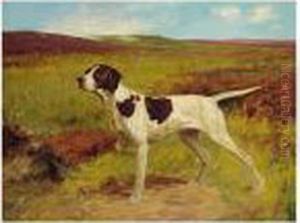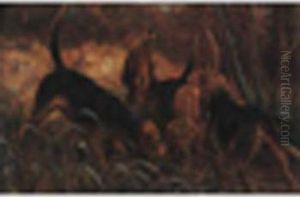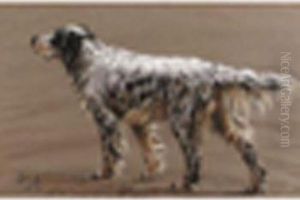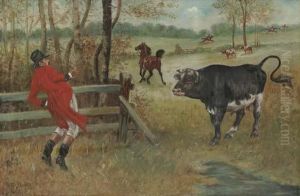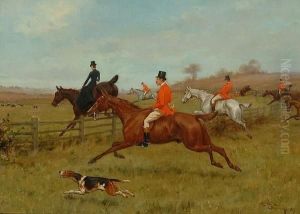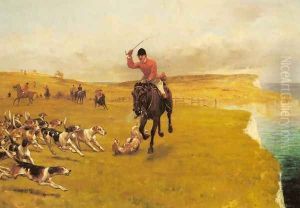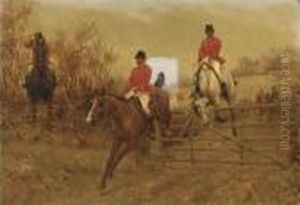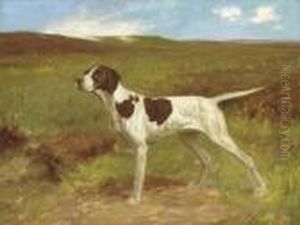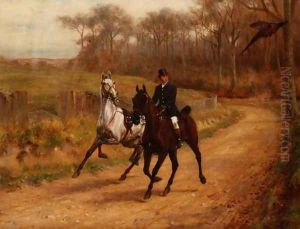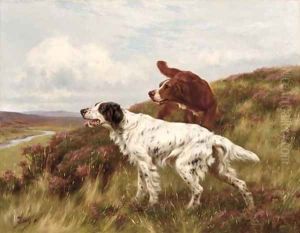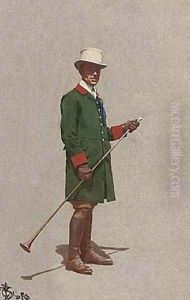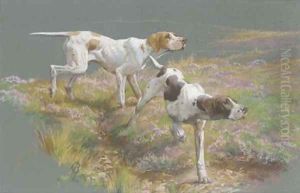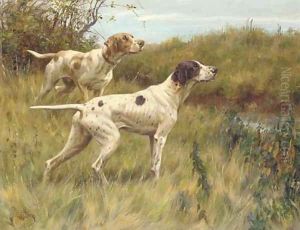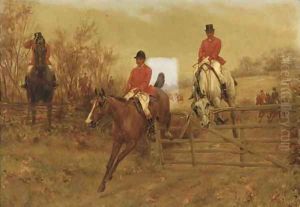Thomas Blinks Paintings
Thomas Blinks, an English painter, was known for his depictions of sporting dogs and field sports. Born in Maidstone, Kent, in 1860, Blinks was largely a self-taught artist who gained recognition for his ability to capture the movement and vitality of hunting scenes and animals, particularly dogs in motion.
From an early age, Blinks demonstrated a keen interest and talent in drawing animals. Despite the lack of formal artistic training, he developed a distinctive style characterized by dynamic composition and attention to detail. His works were marked by a sense of immediacy and action, which resonated with sporting enthusiasts of the time.
By the 1880s, Blinks had established himself as a reputable artist in the sporting genre. He exhibited regularly at the Royal Academy from 1881 onwards, and his paintings were sought after by patrons who admired his realistic portrayal of hunting dogs and the British countryside. Blinks' reputation grew, and he became one of the leading sporting artists of his era.
His paintings often featured pointers, setters, and other gun dogs in the midst of a hunt, showcasing their agility and training. Blinks' ability to depict the nuanced expressions and the sleek, muscular forms of these animals won him acclaim. He also painted scenes of horse racing and fox hunting, capturing the energy and traditions of these sports.
Throughout his career, Blinks remained active in the art world, contributing to exhibitions and taking on commissions. However, his life was relatively short; he died in 1912 at the age of 52. Despite his early death, Thomas Blinks left behind a legacy of work that continues to be appreciated by art collectors and enthusiasts of sporting art. His paintings capture a bygone era of British field sports with a vibrancy that keeps the tradition alive in the visual arts.






